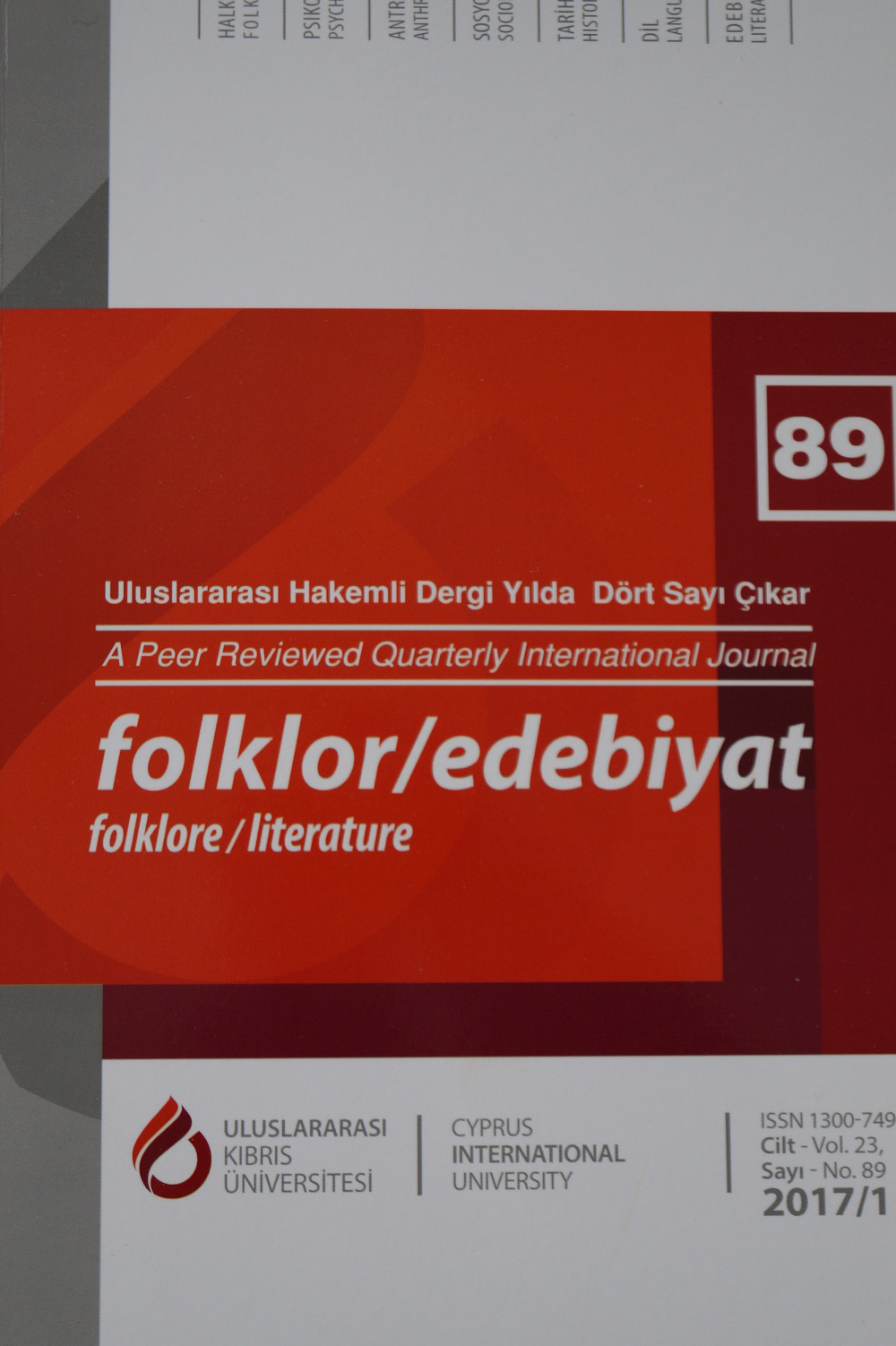
JOURNAL OF FOLKLORE/LITERATURE
Cyprus International University
DOI: 10.5897/UJ-FOLKLORE
Email: folkloredebiyat@ciu.edu.tr
Submission Guidelines
Instructions for Authors
Articles should be written in “Microsoft Word Document” format where “Times New Roman” font and “12” sizes are used. Spacing should be set at 1.5 cm and margins should be 2.5 cm all around. End of sentence words should not be separated according to their syllables. Text orientation should be justified without any indentations, no spacing between paragraphs; however, in the spacing section of MS Word, the “before” option should be set at 6.
First page design:
- Author’s name (right corner, aligned right)
- Article title (aligned right)
- For articles that are translated, the translator’s name (aligned right)
- For original Turkish articles, the abstract should be between 150-200 words in both English and Turkish. The English translation of the article’s title is placed under the Turkish title, which is placed over the abstract. For articles in English, a Turkish abstract of at least 250 words should be prepared.
- Five to six keywords in the article’s original language, then in the abstract’s language should be provided.
- Information to be given as footnotes at the bottom of the page include:
- Author information, denoted with a (*)
- In translated texts, information about the translated source in association with the article, denoted with (**)
- Information about the translator, denoted with (***)
Other Writing and Presentation Rules
Footnotes and Works Cited should be prepared according to the American Psychological Association’s Publication Manual, 6. Primary sources must be indicated when secondary source citations are used. For in-text citations and other technical applications, please visit http://www.apastyle.org/ for further details.
Notes
Notes should be kept to a minimum and should be submitted as numbered endnotes. ***Note: footnote indicators in the text should appear at the end of sentences and follow punctuation marks.
References
It is essential that the references are formatted to the specifications given in these guidelines, as these cannot be formatted automatically. Please use the reference style as described in The APA Publication Manual (6th ed.). References in the text: These should be as precise as possible, giving page references where necessary; for example (Fillmore 1990; Clahsen 1991: 252-253) or, as in Brown et al. (1991: 252). All references in the text should appear in the references section.
References section: References should be listed first alphabetically and then chronologically. The section should include all (and only!) references that are actually mentioned in the text.
Examples Book:
Görlach, M. (2003). English words abroad. Amsterdam: John Benjamins. Spear, N. E., & Miller, R. R. (Eds.). (1981). Information processing in animals: Memory mechanisms. Hillsdale, NJ: Lawrence Erlbaum.
Article (in book):
Adams, C. A., & Dickinson, A. (1981). Actions and habits: Variation in associative representation during instrumental learning. In N. E. Spear & R. R. Miller (Eds.), Information processing in animals: Memory mechanisms (pp. 143-186). Hillsdale, NJ: Erlbaum.
Article (in journal):
Claes, J., & Ortiz López, L. A. (2011). Restricciones pragmáticas y sociales en la expresión defuturidad en el español de Puerto Rico [Pragmatic and social restrictions in the expressio of the future in Puerto Rican Spanish]. Spanish in Context,8, 50–72. Rayson, P., Leech, G. N., & Hodges, M. (1997). Social differentiation in the use of English vocabulary: Some analyses of the conversational component of the British National Corpus. International Journal of Corpus Linguistics, 2(1), 120–132.
